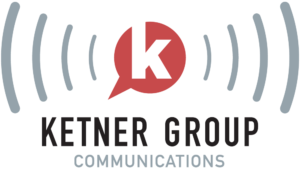OK kids, this is a BIG week! It’s the last week to vote for your favorite SXSW 2017 panels. In case you missed the memo or just need a friendly reminder, this Friday, September 2 is the last day for public voting and commenting for the panels you’d like to see as part of the 2017 programming.
If you are having trouble deciding which panels to vote for, let your friends at Ketner Group help you out! This year, our clients at DynamicAction and Convey have thrown their hat in the ring to speak on some incredible retail and brand-focused panels. And because we love retail tech so much, we’ve also listed several additional panels from our friends at RetailMeNot, Bazaarvoice and eyeQ. Check out our recommendations below:
In this session, four female thought leaders will discuss how the concept of “fit” has evolved from the early days of ready-to-wear clothing to custom clothes-on-demand. From clothing to cosmetics, we’ll explore how retailers need to keep up with changing styles, sizes and gender identities, the changing role of sales associates and how technology (magic mirrors, virtual reality, mobile apps, body imaging) is changing the way shoppers find the perfect fit – forever!
How to Protect Customers from Delivery Disaster
Rising customer expectations are forcing retailers to build complex carrier networks with disparate experiences and capabilities. How can retailers use data to unify the experience, reduce cart abandonment and boost post-purchase satisfaction? What is necessary to answer customers needs for real-time updates? In this panel, eCommerce leaders will discuss how they are overcoming modern delivery challenges to wow customers.
Understanding Privacy in the Land of Oversharing
In this world of consumer oversharing, the line between public and private content is blurry, leaving brands to navigate a murky gray area of what kinds of consumer-generated content can be repurposed for a brand’s needs. How do the boundaries of the law differ from the ethical guidelines set by industry groups, and what can brands do to protect themselves and the consumers they hold so dear?
Data is the New Black: The Consumer “It” Factor
Brands are living in the age of the consumer, but with smarter insights the age of the savvy marketer is bursting onto the scene. So, how can you harness the power of consumer behavior and data in a way that is discrete, empowering and not….creepy? To remain relevant in the cut-throat world of retail, brands must start to leverage consumer behavior data at scale, and optimize the information overload in new and interesting ways.
Privacy in an Era of Shopper-Aware Machines
Retailers and brands are adopting new technologies to better compete with e-commerce. From responsive signage, to beacons and sensors, store environments are becoming embedded with shopper-aware technologies in response to customers’ demands for easier, more fun, and more engaging shopping experiences. But if these devices are aware of – and responding to – shoppers, does that create new privacy concerns? In this survey of emerging technologies panelists will discuss the privacy implications for shoppers, brands and retailers.
Final 2017 programming will be announced the week of October 17. Click here to check out already announced key note and featured speakers!







